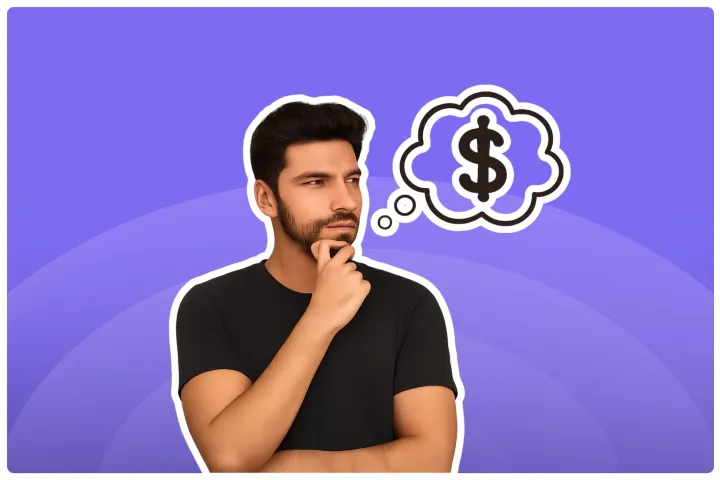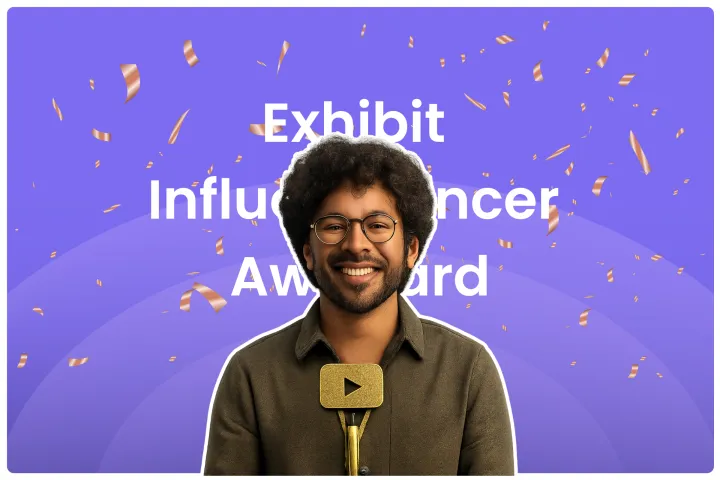Brand Marketing Proposal: Detailed Guide (2025)
Learn the essentials of a successful brand marketing proposal with our easy-to-follow guide. Start making an impact with your brand today!
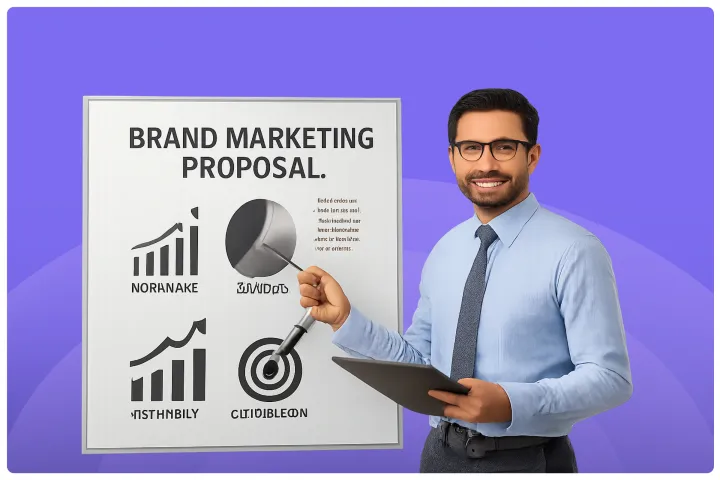
So, you're looking to make a bigger impact with your brand, right? You know marketing is key, but maybe you feel like your efforts are a bit scattered, or you're not sure how to convince stakeholders (or even yourself!) that your plan is solid. That's where a Brand Marketing Proposal comes in – it’s like the blueprint for your brand's marketing journey.
Think of it this way: you wouldn't build a house without a plan, right? You need to know where the walls go, how many rooms you need, and how much cement and bricks to order. A Brand Marketing Proposal does the same for your marketing efforts. It lays everything out clearly, ensuring everyone is on the same page and your precious resources are used effectively.
In this guide, we'll walk through everything you need to know about creating a proposal that not only outlines your strategy but also gets people excited about your brand's future. We'll cover what goes into it, why it's so important, and how to build one step-by-step. Plus, we'll touch on cool tools like ryme.ai that can supercharge specific parts of your strategy, like influencer marketing. Let's get started!
What Is a Brand Marketing Proposal?
Alright, let's break it down. A Brand Marketing Proposal is essentially a detailed document that acts as your strategic roadmap. It clearly outlines what you want to achieve with your brand's marketing, how you plan to do it, what resources you'll need, and how you'll measure success. It’s a formal way to present your marketing vision and plan to internal teams, management, investors, or even potential partners.
Think of it as the ultimate pitch for your marketing activities. It needs to be persuasive, clear, and backed by solid thinking and research. It answers the key questions: Why this strategy? Why now? What will it cost? What results can we expect?
Key Components of a Stellar Proposal
A truly effective proposal isn't just a collection of ideas; it's a structured document with specific sections, each serving a crucial purpose. Let's look at the essential ingredients:
1) Executive Summary: This is your elevator pitch! It's a brief, punchy overview right at the beginning. It summarizes the entire proposal – the main problem or opportunity, the proposed solution (your marketing strategy), key objectives, expected outcomes, and the investment required. Its job is to grab the reader's attention immediately and give them the highlights, making them want to read the rest. Keep it concise, usually no more than a page.
2) Market Analysis: Here's where you show you've done your homework. This section dives into the current market situation.
3) Target Audience: Who are you trying to reach? Get specific. Define their demographics (age, location, income), psychographics (interests, values, lifestyle), pain points, and online behaviour. Create buyer personas if it helps!
4) Market Trends: What's happening in your industry? Are there new technologies, shifting consumer preferences, or economic factors impacting the market? Show you understand the bigger picture.
5) Competitive Analysis: Who are your main competitors? What are their strengths and weaknesses? How are they marketing themselves? Where do you see gaps or opportunities for your brand to stand out? Understanding the competition helps you define your unique space.
6) Objectives: What exactly do you want to achieve? These aren't vague hopes; they are clear, specific goals. The best objectives are SMART (we'll dive deeper into this later). Examples could include:
- Increase brand awareness among millennials in Tier 1 cities by 20% within 6 months.
- Generate 500 qualified leads through digital channels in the next quarter.
- Achieve a 15% increase in website traffic from organic search by year-end.
- Boost social media engagement rate by 25% across Instagram and Facebook over the next 9 months. These objectives must directly support your overall business goals (like increasing sales or market share).
7) Strategy and Tactics: This is the "how-to" part. Based on your analysis and objectives, what's your game plan?
- Overall Strategy: What's the big idea? Are you focusing on content marketing, digital advertising, influencer collaborations, PR, events, or a mix? Define your core approach. For example, your strategy might be "Position Brand X as the go-to sustainable choice for young professionals through targeted digital content and influencer partnerships."
- Tactics: These are the specific actions you'll take. For each part of your strategy, list the tactics. If your strategy involves content marketing, tactics might include: writing 4 blog posts per month, creating 2 video tutorials, hosting a monthly webinar. If it involves social media, tactics could be: posting daily on Instagram (including 3 Reels per week), running targeted Facebook ad campaigns, hosting weekly Q&A sessions on Twitter.
8) Messaging: What key messages do you want to convey? Ensure your brand voice and core value proposition are consistent across all tactics and channels.
9) Budget and Resources: Time to talk money 💰 and people! This section details the investment needed.
- Budget Breakdown: Provide a detailed breakdown of costs associated with each tactic. Include costs for advertising spend, content creation (writing, design, video production), software/tools, influencer fees, event expenses, agency fees (if any), etc. Be realistic and transparent. Use Indian Rupees (₹) clearly. For example:
- Monthly Facebook/Instagram Ad Spend: ₹50,000
- Influencer Collaboration (3 influencers): ₹75,000
- Content Creation (Blog & Video): ₹30,000/month
- Marketing Software Subscription: ₹10,000/month
- Resource Allocation: Who is responsible for what? Outline the team members involved and their roles in executing the plan. Mention if you need to hire new talent or outsource specific tasks.
10) Timeline: When will things happen? A clear timeline manages expectations and keeps the project on track.
- Project Milestones: Break down the entire plan into phases (e.g., Phase 1: Research & Planning, Phase 2: Campaign Launch, Phase 3: Optimization & Reporting). Set clear start and end dates for each phase and key deliverables.
- Key Deadlines: Specify deadlines for important tasks like content approval, campaign launch dates, and reporting intervals. A visual aid like a Gantt chart can be very helpful here.
11) Evaluation Metrics: How will you know if you're succeeding? This section defines how you'll measure performance.
- Key Performance Indicators (KPIs): Select relevant KPIs directly linked to your objectives. Examples include: Website traffic, Conversion rates, Cost per lead (CPL), Customer acquisition cost (CAC), Return on ad spend (ROAS), Social media engagement rate, Brand mentions, Customer lifetime value (CLV), Net Promoter Score (NPS).
- Reporting: Specify how often you will track and report on these KPIs (e.g., weekly, monthly, quarterly) and who will receive these reports.
Putting all these pieces together creates a comprehensive, convincing document that guides your marketing efforts.
Why Is a Brand Marketing Proposal Essential?
Okay, so crafting this proposal sounds like a bit of work. You might be wondering, "Is it really necessary?" Absolutely! Think of it as an investment that pays off in several ways. Here’s why taking the time to build a solid proposal is crucial for your brand:
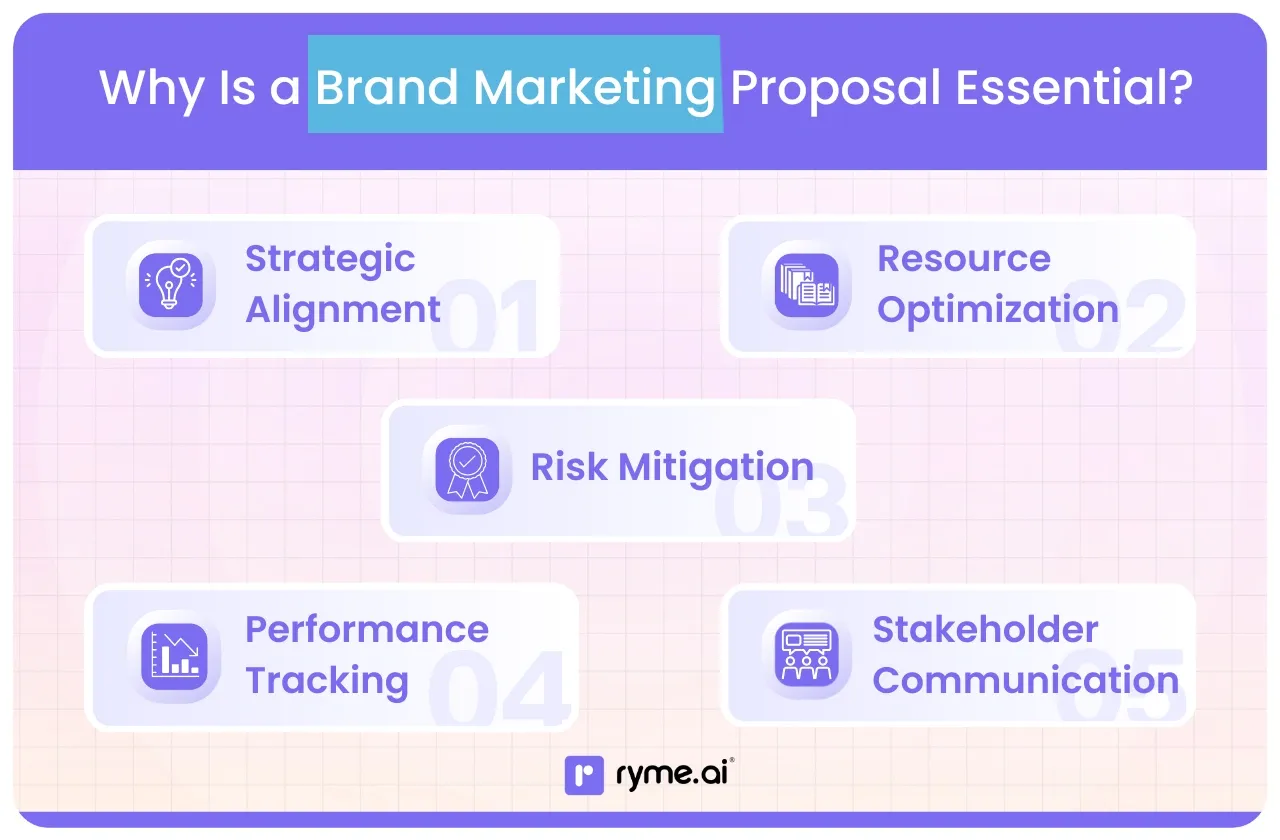
1) Strategic Alignment:
This is a big one. Your marketing efforts shouldn't exist in a vacuum. They need to directly support the larger goals of your business. A proposal forces you to think critically about how each marketing activity – from a single social media post to a large-scale campaign – contributes to objectives like increasing revenue, entering new markets, or building customer loyalty. It ensures everyone, from the marketing team to the CEO, understands how marketing drives business success.
2) Resource Optimization:
Let's be real, resources – time, money, people – are always limited. A proposal helps you allocate these resources wisely. By clearly outlining the strategy, tactics, and associated costs, you can make informed decisions about where to invest your budget for the maximum impact. It prevents wasteful spending on activities that aren't aligned with your goals and ensures your team's efforts are focused on what truly matters.
No more throwing money at random tactics hoping something sticks! You'll have a plan based on research and clear objectives. For instance, a recent report might show that for your target audience in India, Instagram Reels deliver higher engagement than long-form blog posts. Your proposal would reflect this by allocating more resources towards creating engaging Reels.
3) Risk Mitigation:
Every marketing plan faces potential hurdles. Maybe a competitor launches a similar campaign, a chosen platform changes its algorithm, or your budget gets unexpectedly cut. A good proposal anticipates potential challenges. By conducting thorough market analysis and SWOT (Strengths, Weaknesses, Opportunities, Threats) analysis upfront, you can identify potential risks. The proposal process encourages you to think about contingency plans. What will you do if Plan A doesn't work? Having backup options discussed and documented means you can pivot more quickly and effectively if things don't go exactly as planned.
4) Performance Tracking:
How do you know if your marketing is actually working? A proposal sets clear, measurable objectives and defines the KPIs you'll use to track progress. This establishes benchmarks before you start spending money or launching campaigns. It provides a framework for evaluating success objectively. Instead of relying on gut feelings, you'll have concrete data to show what's working, what's not, and where adjustments are needed. This continuous feedback loop is essential for improving performance over time.
5) Stakeholder Communication:
Whether you need approval from your boss, buy-in from other departments (like sales or product development), or funding from investors, a well-structured proposal is your best communication tool. It presents your plan in a clear, logical, and professional manner. It answers potential questions proactively and demonstrates that your strategy is well-thought-out and data-driven.
It fosters transparency and makes it easier to get everyone aligned and supportive of your marketing initiatives. It’s your way of saying, "Here’s our plan, here’s why it makes sense, and here’s how we’ll measure success."
In short, a brand marketing proposal isn't just paperwork; it's a vital strategic tool that brings clarity, focus, and accountability to your marketing efforts, ultimately increasing your chances of success. 👍
How to Craft an Effective Brand Marketing Proposal
Ready to build your own proposal? Awesome! Let's break down the process into manageable steps. Think of this as your recipe for marketing success.
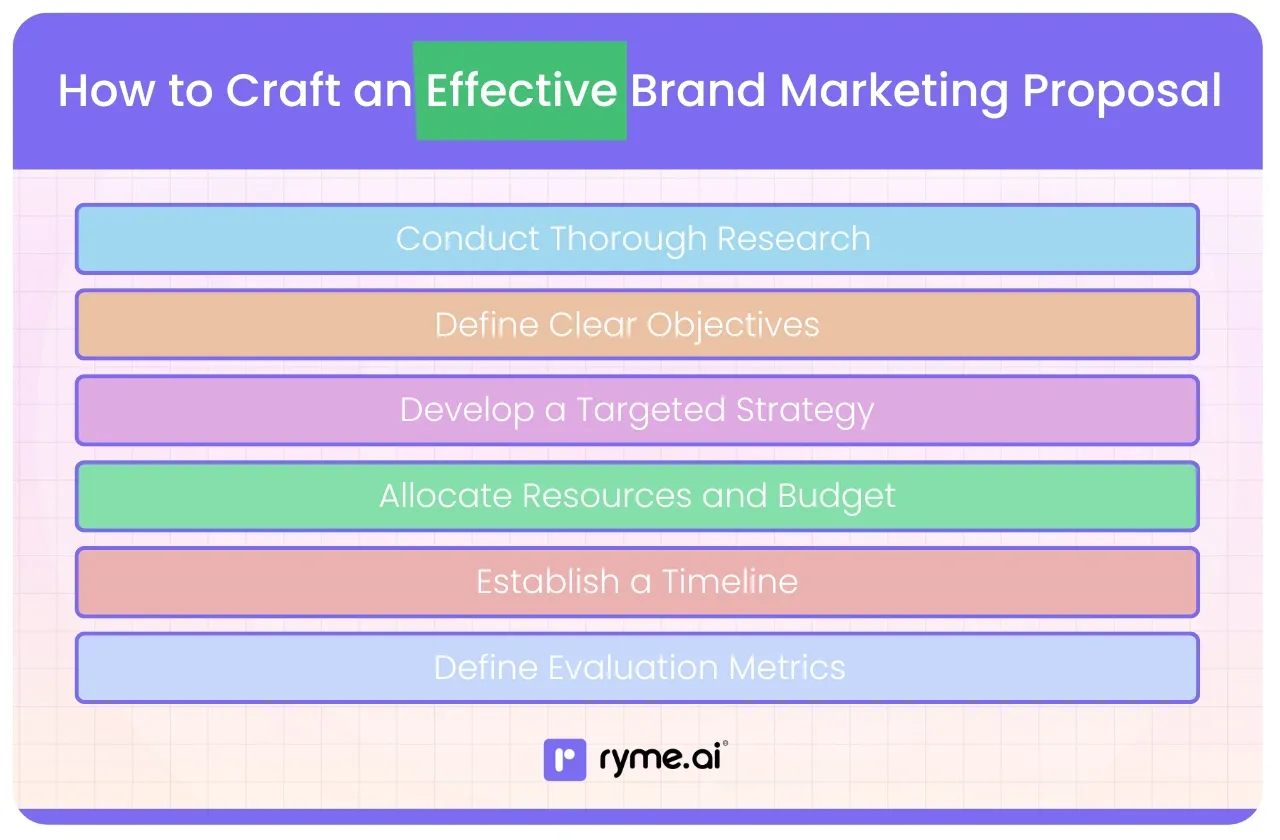
Step 1: Conduct Thorough Research 🕵️♀️
You can't build a solid plan on assumptions. Start by digging deep to understand the context your brand operates in.
Market Research:
- Understand Your Audience: Go beyond basic demographics. What motivates them? What challenges do they face? Where do they spend their time online? What kind of content do they consume? Use surveys, social media listening, customer interviews, and analytics data (like Google Analytics or social media insights) to gather this information. For example, if you're targeting Gen Z in India, research might show a high preference for short-form video content (like Instagram Reels or YouTube Shorts) and influencers they perceive as authentic.
- Analyze Market Trends: What’s happening in your industry? Are there emerging technologies, new regulations, or shifts in consumer behaviour (like a growing demand for sustainable products)? Look at industry reports, market research publications (many are available online), and news sources. Recent data (post-2022) is key here. For instance, you might find data showing a significant rise in e-commerce adoption in Tier 2 and Tier 3 cities in India, presenting a new market opportunity.
- Study Competitors: Identify your key competitors. Analyze their marketing strategies – what channels are they using? What messaging? What seems to be working for them? Where are their weaknesses? Tools like SEMrush or Ahrefs can help analyze their online presence, or simply spend time observing their activities. This isn't about copying them, but about understanding the competitive environment and finding your unique angle.
SWOT Analysis: This classic framework is still incredibly useful. Analyze your brand's:
- Strengths: What do you do well? What unique advantages do you have? (e.g., strong brand reputation, loyal customer base, unique technology)
- Weaknesses: Where do you need to improve? What limitations do you face? (e.g., limited budget, small team, lack of brand awareness in certain segments)
- Opportunities: What external factors can you leverage? (e.g., growing market demand, competitor weaknesses, new technology)
- Threats: What external factors could harm your brand? (e.g., new competitors, changing regulations, economic downturn) Be honest in this assessment. It provides a realistic foundation for your strategy.
Step 2: Define Clear Objectives 🎯
Once you understand the landscape, you need to decide where you want to go. Vague goals like "increase brand awareness" aren't helpful. Use the SMART framework:
- Specific: Clearly state what you want to achieve. (Instead of "increase awareness," use "increase brand mentions on Instagram.")
- Measurable: How will you track progress? Define the metric. (Instead of "increase mentions," use "achieve 500 brand mentions per month on Instagram.")
- Achievable: Is the goal realistic given your resources and market conditions? Don't set yourself up for failure. (Is 500 mentions feasible based on your current baseline and planned activities?)
- Relevant: Does this objective support your overall business goals? (Does increasing Instagram mentions contribute to lead generation or sales?)
- Time-bound: Set a deadline. When do you want to achieve this goal? (Achieve 500 mentions per month within the next 6 months.)
- Example SMART Goal: "Increase website conversion rate for product page X from 2% to 4% within the next quarter (3 months) by optimizing the landing page and running targeted ad campaigns, aligning with the business goal of increasing online sales by 10%."
Alignment with Business Goals: Crucially, ensure your marketing objectives directly contribute to the overarching goals of the business. If the company wants to increase market share, your marketing objectives should focus on acquiring new customers or increasing brand visibility in target segments. If the goal is profitability, your objectives might focus on increasing customer lifetime value or optimizing ad spend for better ROI.
Step 3: Develop a Targeted Strategy
Now, how will you reach those objectives? This involves making smart choices about who you target, how you position your brand, and where you reach your audience.
Audience Segmentation: You likely can't target everyone. Based on your research, divide your potential market into smaller, distinct groups with shared characteristics (e.g., "young urban professionals interested in fitness," "small business owners needing accounting software," "eco-conscious parents"). Choose the segment(s) that offer the best opportunity for your brand and tailor your strategy specifically for them.
Positioning: How do you want your target audience to perceive your brand relative to competitors? What makes you unique? Define your unique value proposition (UVP). Is it price, quality, convenience, innovation, customer service, sustainability? Your positioning statement should clearly articulate this difference.
Example: "For [Target Audience], Brand Y is the [Category] that provides [Key Benefit/UVP] because [Reason to Believe]." This guides your messaging.
Channel Selection: Where does your target audience hang out? Choose the marketing channels that will most effectively reach them. Don't try to be everywhere. Focus your resources where they'll have the most impact. Options include:
- Digital Marketing: SEO, SEM (Google Ads), Social Media Marketing (Facebook, Instagram, LinkedIn, Twitter, TikTok, etc.), Content Marketing (blogs, videos, podcasts, ebooks), Email Marketing, Affiliate Marketing.
- Traditional Marketing: Print Ads, TV/Radio Ads, Billboards, Direct Mail (can still be effective for certain audiences!).
- Other: Public Relations (PR), Influencer Marketing, Events (online or offline), Partnerships. Your choice should be driven by your audience research. If your audience is primarily on Instagram, investing heavily in LinkedIn ads might not make sense. Recent trends often highlight the power of video (especially short-form) and authentic influencer collaborations. For instance, data from 2023 might show that influencer marketing spend in India continues to grow significantly, indicating its perceived effectiveness by brands.
Step 4: Allocate Resources and Budget 💰
This is where the plan meets reality. You need to figure out the costs and assign responsibilities.
Budget Planning: Estimate the costs for each tactic identified in your strategy. Be thorough. Include:
- Advertising costs (e.g., pay-per-click, social media ad spend).
- Content creation costs (writers, designers, video editors, tools).
- Technology costs (marketing software, analytics tools, website hosting/plugins).
- Personnel costs (salaries or freelance fees for marketing staff).
- Influencer fees.
- Event costs (venue, catering, promotion).
Agency fees (if applicable). Present this clearly, often in a table format, showing costs per activity and perhaps a monthly or quarterly total. Use Indian Rupees (₹). Always add a small contingency fund (maybe 5-10%) for unexpected expenses.
Resource Allocation: Clearly define who on your team is responsible for executing each part of the plan. If you have a small team, individuals might wear multiple hats. If you need external help (like a freelance writer, a digital ad specialist, or an agency), specify that here. Clarity on roles prevents confusion and ensures accountability.
Step 5: Establish a Timeline 📅
A plan without a timeline is just a wish list. Set clear deadlines to keep things moving.
- Project Milestones: Break the overall project into logical phases (e.g., Month 1: Setup & Planning, Months 2-4: Campaign Execution & Initial Optimization, Month 5: Mid-Campaign Review, Month 6: Final Push & Reporting). Assign start and end dates to each phase.
- Gantt Chart: A Gantt chart is a fantastic visual tool for timelines. It's a type of bar chart that illustrates a project schedule. It lists tasks on the vertical axis and time intervals on the horizontal axis. The length of the bar shows the duration of each task. This makes it easy to see task dependencies and overall project progress at a glance. There are many free and paid tools available to create Gantt charts (like Asana, Trello with plugins, or even Excel templates).
Step 6: Define Evaluation Metrics (KPIs) 📈
How will you measure success against your objectives? Be specific about the metrics you'll track.
- KPI Selection: Choose KPIs that directly reflect your SMART objectives.
- Objective: Increase website traffic by 20%. KPIs: Unique Visitors, Page Views, Traffic Sources (Organic, Paid, Social, Referral).
- Objective: Generate 500 qualified leads. KPIs: Number of Form Submissions, Conversion Rate (Leads/Visitors), Cost Per Lead (CPL).
- Objective: Improve social media engagement by 25%. KPIs: Likes, Comments, Shares, Engagement Rate, Follower Growth.
- Objective: Increase sales from online channels by 15%. KPIs: Online Sales Revenue, Average Order Value (AOV), Customer Acquisition Cost (CAC), Return on Ad Spend (ROAS).
- Feedback Mechanisms: Besides quantitative data (KPIs), think about qualitative feedback. How will you gather insights from customers and stakeholders?
- Customer Feedback: Surveys, reviews, social media comments, customer service interactions.
- Stakeholder Feedback: Regular update meetings, formal reports, internal feedback sessions. Specify how often you'll monitor these KPIs and feedback channels (e.g., weekly checks, monthly reports) and how you'll use the insights to adjust your strategy. Marketing isn't set-it-and-forget-it; it requires ongoing optimization based on performance data.
Following these steps will give you a robust, well-reasoned proposal that sets your brand up for marketing success.
Integrating ryme.ai into Your Influencer Marketing Proposal
If your research shows that influencers are key to reaching your target audience (especially common for consumer brands targeting younger demographics), you'll want to detail this in your proposal. And tools can make this process much smoother.
Consider ryme.ai, an intelligent platform connecting brands in India with user-generated content (UGC) creators and influencers. ryme.ai offers a streamlined alternative to time-consuming manual searches on platforms like Instagram and costly agencies. ryme.ai act as efficient connectors for brands seeking collaborations.
If influencer marketing is part of your strategy, you can mention using a platform like ryme.ai in the "Strategy and Tactics" and "Budget and Resources" sections of your main Brand Marketing Proposal. It demonstrates a modern, efficient approach.
Here’s how integrating a tool like ryme.ai can be framed within your proposal, highlighting its benefits for your brand:
1) Cost-Effective Marketing:
ryme.ai provides access to a wide range of influencers, including micro and nano influencers, who can be more affordable than celebrities or macro influencers. You might also save on hefty agency commission fees.
Proposal Mention (Budget/Resources): "We will leverage ryme.ai to identify and collaborate with 15-20 micro-influencers within our target niche (e.g., sustainable lifestyle bloggers in Mumbai/Delhi). This approach allows for authentic engagement at an estimated cost of ₹X per campaign, significantly lower than traditional agency rates, optimizing our influencer marketing budget."
2) AI-Powered Matching:
ryme.ai uses AI algorithms to help you find influencers whose audience demographics, interests, and engagement patterns closely match your target customer profile. This increases the likelihood that your message will resonate with the right people.
Proposal Mention (Strategy/Tactics): "To ensure maximum relevance and ROI from our influencer activities, we will utilize ryme.ai's AI matching capabilities. This tool analyzes influencer audience data to connect us with creators whose followers align precisely with our defined target segments (e.g., 25-35 year old females in metro cities with an interest in organic skincare), ensuring our collaborations reach a genuinely interested audience."
3) Real-Time Analytics:
Forget waiting weeks for campaign reports. ryme.ai often provide dashboards with real-time data on campaign performance. You can track metrics like reach, engagement (likes, comments, shares), clicks, conversions (if trackable), and ROI directly through the platform.
Proposal Mention (Evaluation Metrics): "Influencer campaign performance will be monitored in real-time using the analytics dashboard provided by ryme.ai. Key metrics tracked will include reach, engagement rate per post, click-through rates on tracked links, and estimated ROI. This allows for agile adjustments to the campaign based on live data, ensuring we optimize for the best results."
4) Streamlined Collaboration:
Managing multiple influencer collaborations can be chaotic – negotiating rates, briefing creators, approving content, processing payments. ryme.ai centralizes these tasks, simplifying communication, content review workflows, and payment processes.
Proposal Mention (Strategy/Tactics or Resources): "All influencer collaborations will be managed through the ryme.ai platform. This centralizes communication, simplifies the content approval process (ensuring brand guidelines are met), and streamlines payments, increasing efficiency and reducing administrative overhead for our marketing team."
Example Scenario in Proposal:
Let's say you're a sustainable fashion brand targeting eco-conscious millennials in India.
- Strategy: Utilize influencer marketing to build trust and showcase products authentically.
- Tactic: Partner with 20 micro-influencers focused on sustainable living via ryme.ai. Each influencer creates 1 Instagram Reel and 3 Stories featuring the product.
- Budget: Allocate ₹1,50,000 for influencer fees and platform usage via ryme.ai.
- KPIs: Track reach, engagement rate, website clicks from influencer links (using UTM codes), and conversions attributed to the campaign via ryme.ai analytics and Google Analytics.
By specifically mentioning a tool like ryme.ai, you show stakeholders you're adopting efficient, modern methods to execute parts of your strategy, particularly in the rapidly evolving area of influencer marketing. It adds credibility and demonstrates a focus on measurable results.
Best Practices for a Successful Brand Marketing Proposal
Okay, you've gathered the info, defined the steps... now how do you make your proposal shine? It's not just what you say, but how you present it. Here are some best practices to keep in mind:
Clarity and Precision: Avoid jargon and vague language. Use simple sentences and active voice (as we've tried to do here!). Be specific about your plans, costs, and expected outcomes. Ensure your reasoning is logical and easy to follow. The reader shouldn't have to guess what you mean. Get straight to the point.
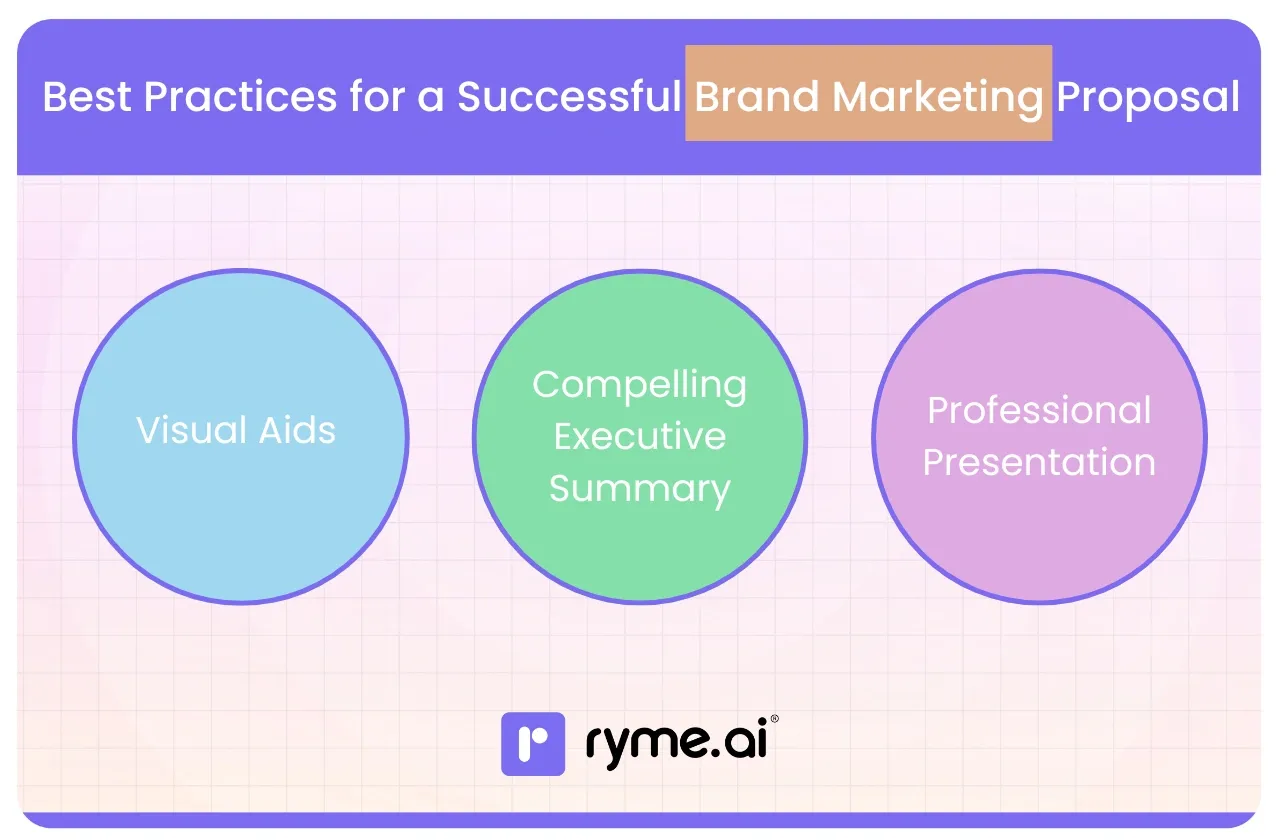
1) Visual Aids: Walls of text can be intimidating. Break up information using:
- Charts and Graphs: Use these to illustrate market trends, budget breakdowns, timelines (like Gantt charts), and potential growth projections. A pie chart for budget allocation or a bar graph showing projected KPI improvement is much easier to digest than a paragraph describing the same data.
- Images and Mockups: Include relevant images of your product, target audience archetypes, or even mockups of proposed ads or social media posts. If referencing specific content styles, like Instagram Reels, briefly describe the visual approach. (e.g., "We plan to create short, engaging Reels demonstrating product use-cases, similar in style to popular tutorials in our niche.")
- Bulleted Lists and Numbered Lists: Use these liberally to make information scannable (like we are doing right now!). Visuals make the proposal more engaging and help communicate complex information quickly.
- Customization: Don't use a generic template without tailoring it. Your proposal should speak directly to the specific brand, its current situation, its unique goals, and the stakeholders reading it. Reference specific challenges the brand is facing (which you uncovered in your research) and position your plan as the solution. If you're presenting to different audiences (e.g., marketing team vs. finance department), you might slightly adjust the emphasis (e.g., more focus on ROI for finance).
2) Compelling Executive Summary: Remember, this is often the first (and sometimes only) section decision-makers read thoroughly. Make it count! It should be concise, confident, and clearly articulate the core value proposition of your proposed marketing plan. Highlight the key objectives, the strategy's main thrust, the required investment, and the expected return or key benefits. Hook them from the start!
3) Professional Presentation: Presentation matters. Ensure your proposal looks polished and professional.
- Consistent Formatting: Use consistent fonts, colours (perhaps incorporating brand colours subtly), heading styles, and spacing throughout the document.
- Logical Flow: Organize the sections logically (following the structure we discussed). Use a table of contents for longer proposals.
- Proofreading: Typos and grammatical errors undermine your credibility. Proofread meticulously, or better yet, have someone else review it with fresh eyes.
- Brand It: Use your company logo and maintain a professional tone that reflects your brand identity.
Think of your proposal as a reflection of your brand and your team's capabilities. A clear, visually appealing, well-researched, and customized proposal demonstrates professionalism and significantly increases your chances of getting buy-in. You got this! ✨
Conclusion
Whew! We've covered a lot of ground, haven't we? From understanding what a Brand Marketing Proposal is, to why it's absolutely essential, and diving deep into the step-by-step process of crafting one – you're now equipped with the knowledge to build a powerful roadmap for your brand's marketing success.
Remember, a great proposal does more than just outline tactics; it tells a compelling story about where your brand is, where you want it to go, and exactly how you plan to get there. It aligns your team, justifies your budget, manages expectations, and sets you up to measure your achievements accurately.
Incorporating specific strategies like influencer marketing, and mentioning tools like ryme.ai where appropriate, shows you're thinking strategically and efficiently about execution.
Don't let the process intimidate you. Think of it as investing time upfront to save time, money, and headaches down the road. It's about being intentional and strategic, rather than reactive. By following the steps and best practices we've discussed, you can create a proposal that not only gets approved but also serves as a true guide for driving meaningful results for your brand.
So, take a deep breath, roll up your sleeves, and start building that blueprint. Your brand's future success story starts now!
FAQs Related To Brand Marketing Proposal
Got a few more questions buzzing around? Let's tackle some common ones:
1) How to write a proposal for branding?
A proposal for branding is slightly different from a brand marketing proposal, though they share similarities. A branding proposal typically focuses on establishing or refreshing the brand's core identity – logo, visual style, brand voice, mission, values, positioning. It would include:
- Understanding the current brand perception (research).
- Defining the desired brand identity and positioning.
- Outlining the creative process (logo design options, style guide creation, messaging development).
- Deliverables (e.g., new logo files, brand style guide, tagline options).
- Timeline for the branding project.
Budget for the creative work. Essentially, it's focused on building the brand foundation, while a brand marketing proposal focuses on promoting the established brand.
2) How do I write a marketing proposal?
Writing a marketing proposal follows the steps we outlined extensively above:
- Start with Research: Analyze your market, audience, and competitors. Conduct a SWOT analysis.
- Define SMART Objectives: What do you want to achieve? Make them specific, measurable, achievable, relevant, and time-bound. Align them with business goals.
- Develop Strategy & Tactics: Outline your overall approach (positioning, key message) and the specific actions (channels, content, campaigns) you'll take.
- Detail Budget & Resources: Specify costs for each activity (use ₹) and who is responsible for what.
- Set a Timeline: Create milestones and deadlines, possibly using a Gantt chart.
- Establish Evaluation Metrics: Define your KPIs and how you'll track success.
- Structure Professionally: Include an Executive Summary, Table of Contents, clear sections, visuals, and proofread carefully. Customize it for your specific situation.
3) What are brand marketing examples?
Brand marketing focuses on building a long-term relationship with consumers and establishing a distinct identity, rather than just promoting a single product or offer. Examples include:
- Content Marketing: Creating valuable blog posts, videos, or podcasts that establish expertise and connect with audience interests (e.g., Amul's topical cartoons, Zomato's witty social media content).
- Storytelling Campaigns: Ads that focus on the brand's values, mission, or customer stories rather than just product features (e.g., Nike's "Just Do It" campaigns, many Tata Salt ads focusing on trust and nation-building).
- Building Communities: Creating Facebook groups, forums, or loyalty programs that foster a sense of belonging around the brand.
- Consistent Visual Identity & Voice: Using the same logo, colour palette, typography, and tone of voice across all touchpoints (think of the distinct look and feel of brands like Paper Boat or Fabindia).
- Sponsorships & Partnerships: Associating the brand with events or causes that align with its values (e.g., sponsoring local cultural festivals, partnering with environmental NGOs).
- Influencer Marketing (Brand Focused): Collaborating with influencers for long-term ambassadorships to build credibility and awareness, rather than just short-term promotions.
4) What is a proposal to promote a brand?
This is essentially another term for a Brand Marketing Proposal! It's a document outlining the plan and justification for activities designed to increase a brand's visibility, strengthen its reputation, connect with its target audience, and ultimately drive business results. It covers the strategy, tactics, budget, timeline, and metrics for promotional efforts focused on the overall brand, not just a specific product sale. So, everything we've discussed in this article directly applies to creating a proposal to promote your brand.
Actionable Checklist: Building Your Brand Marketing Proposal
Feeling ready? Here’s a quick checklist to guide you:
✅ Understand Your 'Why': Clearly define the purpose of the proposal – what problem are you solving or opportunity are you seizing?
✅ Deep Dive Research:
- Analyze your target audience thoroughly.
- Research current market trends (use recent data!).
- Scope out your competitors.
- Conduct an honest SWOT analysis.
✅ Set SMART Objectives: Make them Specific, Measurable, Achievable, Relevant, Time-bound, and aligned with business goals.
- Craft Your Strategy:
- Define your target audience segment(s).
- Determine your unique brand positioning.
- Choose the most effective marketing channels.
- Outline your core messaging.
✅ List Your Tactics: Detail the specific actions for each channel (e.g., X blog posts, Y social media ads, Z influencer collabs).
- Plan Your Budget:
- Estimate costs for every activity (use ₹).
✅ Include a contingency fund (5-10%).
✅ Allocate Resources: Assign clear roles and responsibilities.
✅ Map Out Your Timeline: Set realistic milestones and deadlines (consider a Gantt chart).
✅ Define Success Metrics: Choose relevant KPIs linked to your objectives. Decide on reporting frequency.
✅ Consider Tools: Mention specific platforms (like ryme.ai for influencers) if they streamline execution.
✅ Write a Killer Executive Summary: Make it concise and compelling.
✅ Enhance with Visuals: Use charts, graphs, and lists.
✅ Customize: Tailor the proposal to your brand and audience.
✅ Proofread & Polish: Ensure professional formatting and error-free text.
✅ Get Feedback (Optional but Recommended): Have a colleague review it before finalizing.
